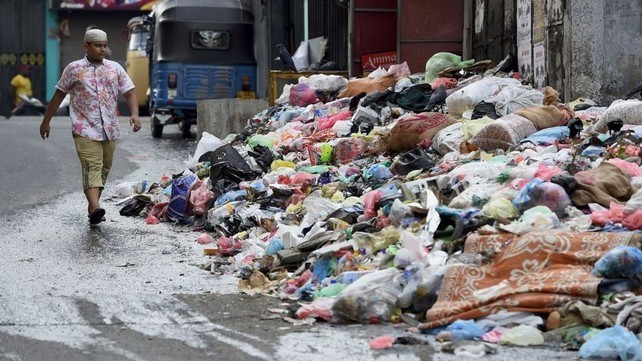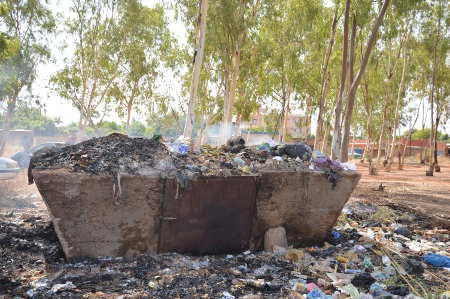The dengue fever in Burkina Faso has caused the death of at least 13 people according to the death toll published by the Health Ministry on October 25.
This is probably correct. But I sincerely wish that the Ministry would explain how it has come to speak of 13 deaths. How have they been counted? Where did they happen? In a hospital in Ouagadougou? At least 13 deaths !
 I wish the Ministry would give us a more detailed account of the scope of the dengue fever epidemic, region by region. That it has the courage to make an estimate of the new state of the spread in a few days.
I wish the Ministry would give us a more detailed account of the scope of the dengue fever epidemic, region by region. That it has the courage to make an estimate of the new state of the spread in a few days.
Indeed 13 deaths ! 13 casualties caused by dengue fever. Those which have been registered and checked. And the others, of people who died at home, in their village? Obviously they cannot be counted. But it is permitted to state that that
the deaths that have not been registered and checked are likely to exceed by far the deaths accounted for.
What if these deaths occurred in the rural areas. Medias inform us of the situation in Ouagadougou. The Ministry speaks of spraying the areas in the capital that are most likely to harbour, the principal vector mosquito. .
I have read nothing about the situation of Koudougou.I do not see the inhabitants getting busy to eliminate the smallest pool of stagnant water. However, only in my own circle of friends the cases of dengue fever are numerous. Tomorrow we will bury our Sister Lala, who died on the 1st of November.
For those who wish to consult detailed scientific and readable information I recommend the WHO web site “ dengue and severe dengue fever ”.
Even though the symptoms of dengue and the symptoms of malaria are similar and transmitted by mosquitoes, the two conditions are not the same : the Malaria is an illness caused by the Plasmodium mosquito, dengue is an infection caused by a virus
The two fevers are transmitted by two different kinds of mosquito.
The malaria mosquito is an anophele of the Plasmodium family and is active at night ».Dengue fever is a viral infection.
 The dengue virus is transmitted to humans by bites of the infected females of the Aedes family. better known as the Tiger mosquito (see picture above). The Tiger mosquito has its peak activity in the early morning and before sunset in the evening. During feeding periods the female bites several persons.
The dengue virus is transmitted to humans by bites of the infected females of the Aedes family. better known as the Tiger mosquito (see picture above). The Tiger mosquito has its peak activity in the early morning and before sunset in the evening. During feeding periods the female bites several persons.
There is no specific treatment of dengue. But medical care is available to accompany patients.
The only way to protect ourselves and fight the spread of this fever is a maximum reduction of the vector mosquito populationThis fight is all the more necessary since the hemorrhagic kind of the fever apparently is becoming increasingly frequent.
Hence the following recommendations from the Government.
 Stay high and dry around mosquitoes. Beware of sleeping waters… Half of the success is YOU ! EVERYWHERE: Get rid of stagnant water To this day the eradication of the mosquito is the most efficient protection against the dengue fever. Therefore we must get rid of stagnant water in our courtyards and environment, empty water in flower pots and put away everything that is likely to retain rain or irrigation water and cleaning at least once a week objects where water can stay for long periods, for example tyres, empty cans - all that makes it possible to avoid the multiplication of mosquitoes.
Stay high and dry around mosquitoes. Beware of sleeping waters… Half of the success is YOU ! EVERYWHERE: Get rid of stagnant water To this day the eradication of the mosquito is the most efficient protection against the dengue fever. Therefore we must get rid of stagnant water in our courtyards and environment, empty water in flower pots and put away everything that is likely to retain rain or irrigation water and cleaning at least once a week objects where water can stay for long periods, for example tyres, empty cans - all that makes it possible to avoid the multiplication of mosquitoes.
It is furthermore recommended to use clothing to avoid mosquito bites, cover our skin as much as possible, using insecticides and sleeping under mosquito nets (preferably impregnated by an insecticide).
I would personally add : increasing good hygiene practices.
A newspaper report from Sri Lanka of June 26 recently : carried the headline An outbreak of dengue fever attributed to heaps of uncollected garbage. The article states:
 “Heaps of garbage are piling up in the streets of Colombo. This health hazard facilitates the reproduction of mosquitoes.” “The situation could deteriorate further, if we do not quickly resolve the problem of waste collection” the Minister of Health, Rajitha Senaratne, states in a declaration to the news agency AFP.
“Heaps of garbage are piling up in the streets of Colombo. This health hazard facilitates the reproduction of mosquitoes.” “The situation could deteriorate further, if we do not quickly resolve the problem of waste collection” the Minister of Health, Rajitha Senaratne, states in a declaration to the news agency AFP.
I conclude this newsletter by calling on the Mayor of Koudougou:
What if dengue fever in Koudougou is also caused by our uncollected open garbage piles?
Picture taken on November 5th 2017
Koudougou, Novemer 5th 2017
Maurice Oudet
Director of SEDELAN










